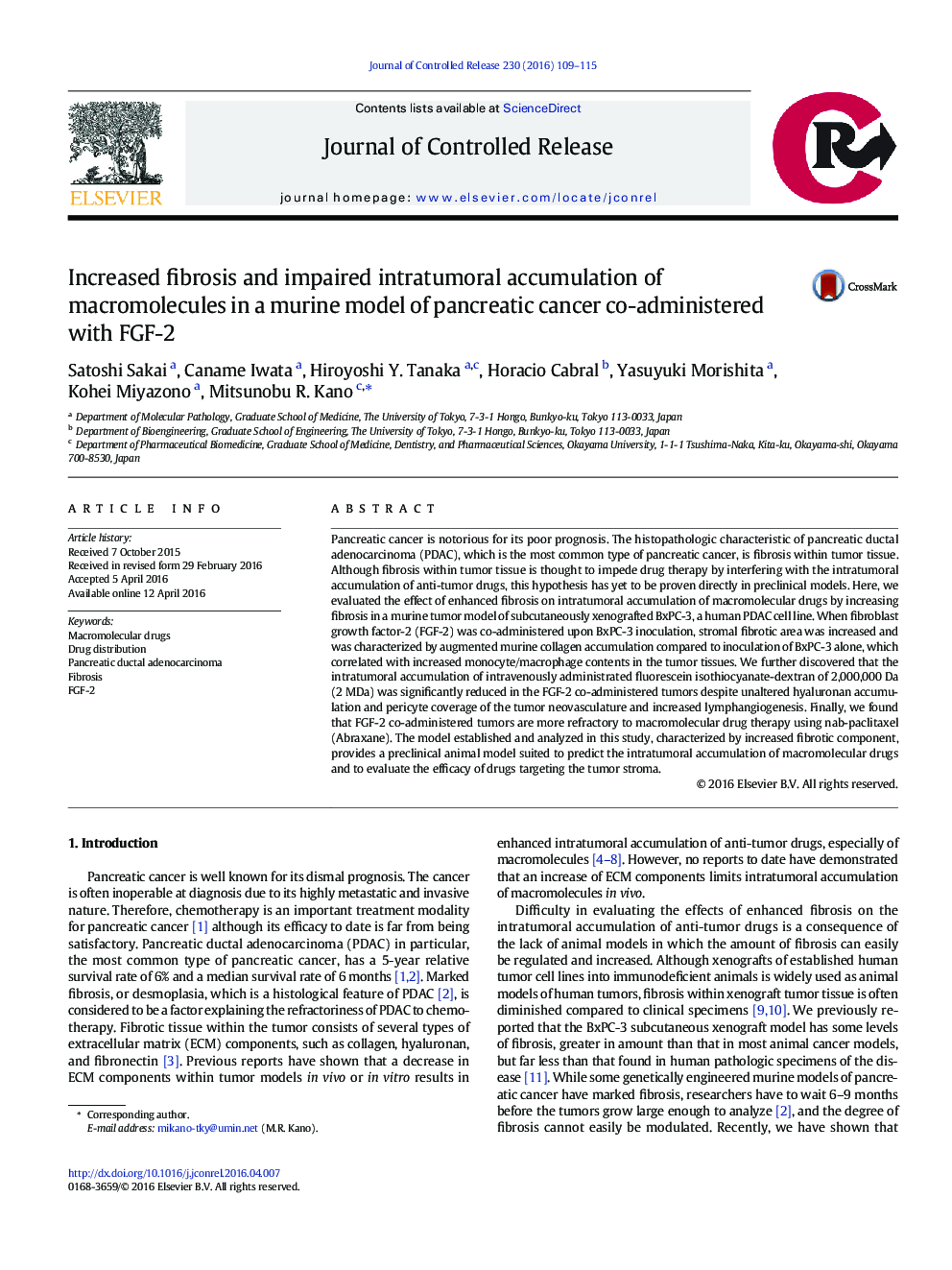| Article ID | Journal | Published Year | Pages | File Type |
|---|---|---|---|---|
| 1423588 | Journal of Controlled Release | 2016 | 7 Pages |
Pancreatic cancer is notorious for its poor prognosis. The histopathologic characteristic of pancreatic ductal adenocarcinoma (PDAC), which is the most common type of pancreatic cancer, is fibrosis within tumor tissue. Although fibrosis within tumor tissue is thought to impede drug therapy by interfering with the intratumoral accumulation of anti-tumor drugs, this hypothesis has yet to be proven directly in preclinical models. Here, we evaluated the effect of enhanced fibrosis on intratumoral accumulation of macromolecular drugs by increasing fibrosis in a murine tumor model of subcutaneously xenografted BxPC-3, a human PDAC cell line. When fibroblast growth factor-2 (FGF-2) was co-administered upon BxPC-3 inoculation, stromal fibrotic area was increased and was characterized by augmented murine collagen accumulation compared to inoculation of BxPC-3 alone, which correlated with increased monocyte/macrophage contents in the tumor tissues. We further discovered that the intratumoral accumulation of intravenously administrated fluorescein isothiocyanate-dextran of 2,000,000 Da (2 MDa) was significantly reduced in the FGF-2 co-administered tumors despite unaltered hyaluronan accumulation and pericyte coverage of the tumor neovasculature and increased lymphangiogenesis. Finally, we found that FGF-2 co-administered tumors are more refractory to macromolecular drug therapy using nab-paclitaxel (Abraxane). The model established and analyzed in this study, characterized by increased fibrotic component, provides a preclinical animal model suited to predict the intratumoral accumulation of macromolecular drugs and to evaluate the efficacy of drugs targeting the tumor stroma.
Graphical abstractFigure optionsDownload full-size imageDownload high-quality image (261 K)Download as PowerPoint slide
